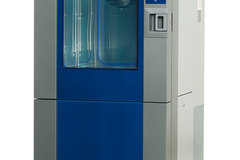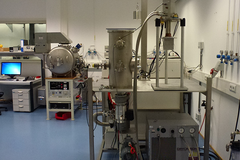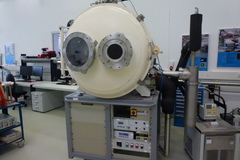Technical Characteristics:
- ISO 7;
- Dimensions [cm]: 873 x 810 (length x width);
- Temperature: 23 ± 2°C;
- Relative Humidity: 55±10%;
- Telstar Laminar ISO 4.
- UV-A blacklight inspection lamps for cleanroom validation (optional)
Mechanical activities: assembly of parts, dimensional control of parts, hardware cleaning.
Electronic Activities: soldering; manufacturing of electrical harnesses, electrical assemblies, PCB assembly.
The cleanroom provides an environment that minimizes contaminants, which may adversely affect the manufacture of a product. It is a facility in which the concentration of airborne particulates and other contaminants are controlled to remain below specific threshold limits.
Once the environment has been thoroughly cleaned to eliminate contaminants, maintenance of the facility to keep it in compliance with the threshold limit of contamination becomes a matter of process control.
People, processes, equipment, and the enclosures of the facility continually generate contaminants. These contaminants must be continually removed from the air as well as prevented entry into the facility. The level to which particles must be held to a minimum depends upon the standards required by the facility and the processes undertaken within the facility.
Control of the total environment including all processes and activity within the environment is necessary to control contamination. Air flow rates and direction, pressurization, temperature, humidity, and filtration all need to be tightly controlled.
Introduction of material, motion within the environment, and the logistics for operating procedures are just as important if not more so than simply the filtration of the air coming into the cleanroom. Cleanrooms are planned and manufactured using strict design principles and operating protocols.













